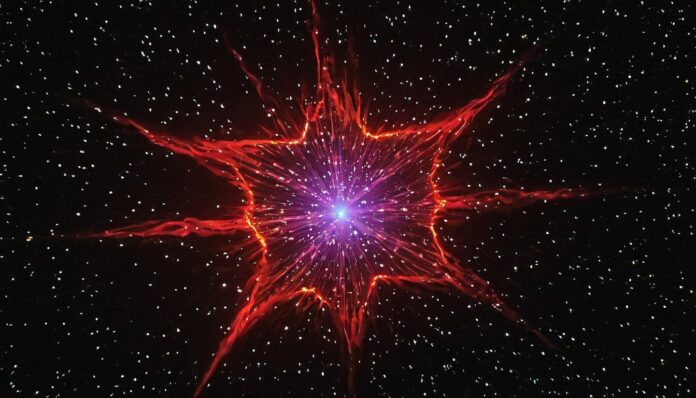Pulsars are like cosmic lighthouses, sending out beams of radiation that sweep across the universe with remarkable regularity. But what exactly are they? Pulsars are incredibly dense remnants of massive stars that have exploded in supernova events.
When these stars collapse, their cores become incredibly compact, squeezing matter together so tightly that a teaspoon of it would weigh billions of tons! As the star collapses, it begins to spin rapidly, and if it’s spinning fast enough, it emits beams of radiation from its magnetic poles. These beams sweep across space like the light from a lighthouse, creating a pulsing signal that can be detected by astronomers here on Earth.
The Astonishing World of Pulsars
Pulsars are some of the most exotic objects in the universe, with properties that defy our everyday understanding of physics. For example, they can rotate incredibly fast, with some pulsars completing hundreds of rotations per second! This rapid rotation generates intense magnetic fields that can be billions of times stronger than those on Earth.
Pulsars also emit radiation across a wide range of wavelengths, from radio waves to X-rays and gamma rays, making them valuable tools for astronomers studying the cosmos.
Unlocking the Secrets of Pulsars
The study of pulsars has revolutionized our understanding of the universe, providing insights into everything from the behavior of matter under extreme conditions to the structure of galaxies and the nature of spacetime itself.
For example, pulsars have been used to test Einstein’s theory of general relativity, confirming its predictions with remarkable precision. They’ve also helped astronomers map the distribution of matter in our galaxy, revealing the presence of invisible dark matter and shedding light on the cosmic web that connects galaxies across the universe.
Pulsars: Guardians of Time and Space
In addition to their scientific importance, pulsars also capture the imagination with their cosmic significance. They serve as reminders of the vastness and beauty of the universe, showcasing the awe-inspiring power of natural processes on a cosmic scale. From their humble beginnings as massive stars to their spectacular endings as pulsating remnants, pulsars embody the cycle of birth, life, and death that governs the cosmos.
As we continue to explore the mysteries of pulsars and the universe beyond, we’re reminded of our place in the grand tapestry of space and time, connected to the cosmos in ways we’re only beginning to comprehend.
